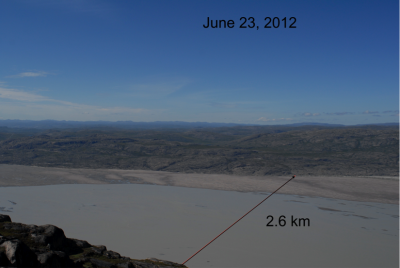Labs PLUME
Plume Modeling
Once we have moved sediment and water over hillslopes and routed it through a river system, we can think about this flux of water and sediment draining into lakes or into the ocean. Typically the riverine freshwater and the suspended sediments will form a so-called hypopycnal sediment plume. We will use a component called PLUME to investigate the behavior of these sediment plumes. The model is largely based on turbulent jet theory presented by Albertson et al., (1950).
In this lab we will look at the river plume characteristics and the depositional patterns for single plume events.
STEP1 Load the PLUME component
>> Open the CMT, Go to Projects, Courses, choose 2013.
>> Drag the PLUME component into the driver palette.
>> Specify a unique working directory for each experiment, for example: /CMT_Output/PLUME1
>> (…etc PLUME2 for the next experiment).
River Characteristics
In this lab we will focus on a specific braided river system in West-Greenland. The Watson River drains a small section of the Greenland Ice Sheet, it winds through a narrow braided river plain for about 20km and then drains into Kangerlussuaq Fjord. The photo shows the river braidplain in 2012, which was a peak discharge year in Greenland The waterdepths on the braidplain are typically not very deep (>1m with perhaps a smaller channel section that is deeper ~ 3m).



